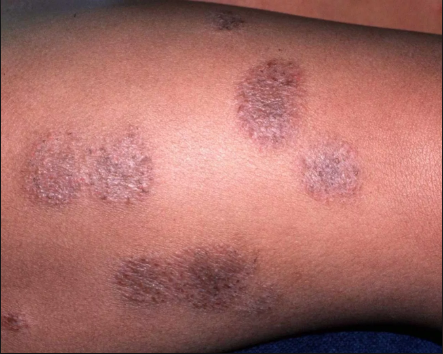
Everything You Need To Know About The Causes And Prevention Of Ringworm
- Ayo AL
- May 10, 2018
- Health
- Causes And Prevention Of Ringworm In Adults, causes of ringworm, prevention of ringworm, ringworm causes, ringworm prevention
- 0 Comments

Ringworm is a common fungal infection that can cause a red or silvery ring-like rash on the skin. It can be very bad if not quickly treated and when this happens, it can leave the skin scarred.
Below is everything you should know about ringworm
Symptoms
Ringworm typically begins as a flat scaly area on the skin, which may be red and itchy. This patch develops a slightly raised border that expands outward — forming a roughly circular ring. The contours of the ring may be quite irregular, resembling the wavy outline of a snake or a worm.
The interior of the ring may be clear, scaly or marked with a scattering of red bumps. In some people, several rings develop at the same time and may overlap.
7 Amazing Health And Beauty Benefits Of Fenugreek
Causes
Ringworm is a contagious fungal infection caused by mold-like parasites that live on the cells in the outer layer of your skin. It can be spread in the following ways:
- Human to human. Ringworm often spreads by direct, skin-to-skin contact with an infected person.
- Animal to human. You can contract ringworm by touching an animal with ringworm. Ringworm can spread while petting or grooming dogs or cats. It’s also fairly common in cows.
- Object to human. Ringworm can spread by contact with objects or surfaces that an infected person or animal has recently touched or rubbed against, such as clothing, towels, bedding and linens, combs, and brushes.
- Soil to human. In rare cases, ringworm can be spread to humans by contact with infected soil. Infection would most likely occur only from prolonged contact with highly infected soil.
Preventive measures
Ringworm is difficult to prevent. The fungus that causes ringworm is common and contagious even before symptoms appear. Help reduce your risk of ringworm by taking these steps:
- Educate yourself and others. Be aware of the risk of ringworm from infected people or pets. Tell your children about ringworm, what to watch for and how to avoid the infection.
- Keep clean. Wash your hands often to avoid the spread of infection. Keep common or shared areas clean, especially in schools, child care centers, gyms and locker rooms.
- Stay cool and dry. Don’t wear thick clothing for long periods of time in warm, humid weather. Avoid excessive sweating.
- Avoid infected animals. The infection often looks like a patch of skin where fur is missing. In some cases, though, you may not notice any signs of the disease. Ask your veterinarian to check your pets and domesticated animals for ringworm.
- Don’t share personal items. Don’t let others use your clothing, towels, hairbrushes or other personal items. Refrain from borrowing these items from others as well.






